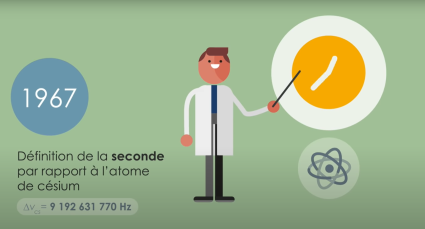
A new generation of atomic clocks, 100 times more accurate than cesium clocks, is about to reach maturity. They open the way to a redefinition of the unit of time scheduled for 2030.

Realized with a relative uncertainty of the order of 10-16, the second is the fundamental unit with the highest degree of accuracy. At the same time, it is the unit with the oldest definition, since 1967. In contrast, four of the seven units of the International System (SI), the kilogram, the ampere, the kelvin and the mole, have seen their definitions change in 2018. At the crossroads of fundamental advances and technical progress, metrology is constantly reinventing itself, gaining in precision and offering new possibilities to its end users. Thus, in recent years, metrologists have begun their last major project at the beginning of the 21st century, which aims, by 2030, the adoption of a new definition of the unit of time offering a realization with a potential of accuracy at least 100 times better than the current definition.
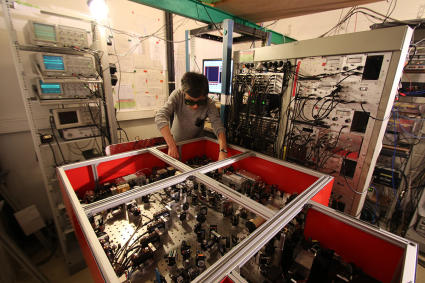
After having been defined from the duration of the terrestrial day and then from that of a year, the second has been defined since 1967 as the duration of 9 192 631 770 periods of the radiation corresponding to the transition between the two hyperfine levels of the ground state of the cesium 133 atom. In practice, this definition is implemented in the various National Metrology Laboratories around the world using atomic clocks. The International Bureau of Weights and Measures (IBWM) use the data from these clocks to calculate International Atomic Time (IAT), from which Coordinated Universal Time (CUT) is defined. Thanks to the accuracy and availability of its standards - two cesium clocks and a third cesium/rubidium clock - the French laboratory performs 40% of the primary calibrations of IAT at the world level.
Based on the measurement of frequency of a radiation located in the microwave part of the electromagnetic spectrum,atomic time does not deviate more than one second per 100 million years. On the other,
« The level of mastery achieved with cesium clocks is now such that we can't do better in terms of precision. »
However, from communication or energy networks to fundamental physics, geosciences and astronomy, many fields would benefit from the implementation of a definition offering an even more precise realization of the time unit.
Thus, for the past fifteen years, particularly thanks to the progress made in the field of femto-second lasers, metrologists have been working on a new generation of clocks: optical clocks. Their principle? An atomic transition located in the optical part of the electromagnetic spectrum, whose frequency is consequently much higher than that of a microwave transition. In the same way that a ruler is more precise that its graduations are tight, the optical clocks are intrinsically more precise than their alter ego in cesium is.
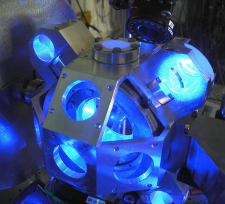
In practice, different atomic or ionic species are exploited in several laboratories, which have demonstrated that an optical clock can indeed reach a relative frequency accuracy of the order of 10-18, which would correspond to a drift of one second over a period equivalent to the age of the universe! For its part, LNE-SYRTE has developed two clocks based on a strontium transition, and another using mercury. The metrology laboratory is also developing a transportable optical clock using ytterbium.
Towards a new redefinition
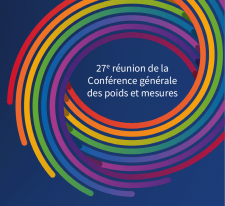
Today, there is no doubt that optical clocks will eventually become the new time standards. However, there is still a long way to go to move from the laboratory to a robust and durable global metrological infrastructure capable of supplanting cesium. To achieve this, the next General Conference on Weights and Measures (GCWM), to be held in Versailles from November 15 to 18, 2022, will adopt a roadmap that will ultimately lead to the implementation of the "new" definition of the second. As Noël Dimarcq, President of the Consultative Committee for Time and Frequency (CCTF), within the International Committee for Weights and Measures (ICWM), explains, "this roadmap aims to reach a consensus on the best way to redefine the second by 2026, for a final adoption of the new unit probably in 2030."
At present, metrologists are considering three possibilities, two of which are really debated. The first would be to select a particular transition (in the optical domain) of an atom or an ion, in the same way that the current definition is linked to cesium alone. While this option may seem the most natural, Sébastien Bize, at LNE-SYRTE, points out, "At present, there are about ten promising atomic transitions. Selecting just one would mean not taking advantage of much of the work done in recent years by many metrology teams." Thus, LNE-SYRTE scientists have recently formulated another proposal: to base the definition of the "new" second not on a single transition, but intrinsically on a set of transitions, each of which separately allows the definition to be achieved. "We have shown that such a definition of the unit of time would have all the required properties", adds the physicist.
In addition, performance, reliability, inter-comparisons, availability, continuity... the roadmap presented to the GCWM details all the criteria that must be met before the decision to redefine the second can be taken. As Noël Dimarcq points out, "for the time being, the technological maturity of atomic clocks and the means of comparing and distributing their signals must be improved, and major efforts are still required in terms of deployment and reinforcement."
France in the foreground
In this area, LNE-SYRTE is at the forefront, with several promising results and achievements to its credit. Thus, since 2017, the laboratory has had an automatic measurement and inter-comparison station for its optical references, enabling it to establish accuracy balances over several weeks without human intervention. In addition, this same year, the French laboratory organized with its German alter ego, the PTB, the first campaign of inter-comparison by optical fiber of their respective optical clocks. Over the years, other national laboratories, notably British and Italian, have joined the campaign. An intercomparison program with transportable clocks has also been conducted with the PTB, and another is in preparation with Japanese metrologists. As Sébastien Bize explains, "not only must the reproducibility of optical clocks be demonstrated at the international level before any new definition is definitively adopted, but, in the long term, routine comparisons will be essential to guarantee their robustness over time."
In order to initiate the transition to the new second, it is also important to reinforce the use of optical clocks for IAT calibration, in addition to that routinely performed with cesium clocks. In 2017, LNE-SYRTE was the first laboratory to connect one of its strontium clocks to the global microwave network. The calibrations thus performed were then integrated into Circular T in connection with the construction of IAT by the IBWM. These calibrations do not yet have an influence on the accuracy of the realization of the unit of time since their uncertainties remain limited by those of the cesium clocks. Nevertheless, they demonstrate the full potential of optical clocks. "Regular measurements on our optical clocks, a contribution of their part to the international atomic time and the multiplication of intercomparisons are the three axes which structure our work in the direction of the redesign of the time unit", summarizes Sébastien Bize.
Opening the way to new applications
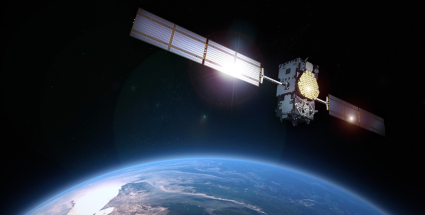
When it becomes effective, the new definition will immediately benefit many users of atomic time, whether for scientific experiments or for applications with high socio-economic stakes. For example, in the case of telecommunications networks, the increase in data rates, as well as the increase in the number of connected objects - 20 billion by 2020! - is accompanied by increased synchronization needs. The same is true for high-frequency banking transactions, distributed energy networks and the new "smart" factories made possible by digital tools. As for satellite positioning systems, which are based on the measurement of the travel time of an electromagnetic signal, the optical second will make it possible to improve their accuracy and robustness, with applications in geophysics, for example for the study of the movement of tectonic plates or the monitoring of the rise in sea levels. The precision of optical clocks also opens the way to a new discipline, chronometric geodesy, based on the measurement of small differences in rhythm, predicted by general relativity, between two atomic clocks located at different altitudes. At the level of precision of optical clocks, the measurement of these differences will lead to a sensitivity in altitude better than the centimeter, beyond the sensitivity of the current most powerful geodesic methods.
Sensitive to the finest effects of relativity, optical time will also make it possible to test its limits in the context of research aimed at going beyond Einstein's theory or including it in a framework compatible with quantum mechanics. Sébastien Bize adds, "It is also possible that optical clocks, by measuring the possible variation in time of frequency ratios of different clocks, and by correlating it with the movement of the Earth, will finally make it possible to bring to light dark matter, whose gravitational effects astrophysicists measure, but whose nature is unknown." The new second, more accurate than ever thanks to the progress made in physics in recent years, would then become the agent capable of revolutionizing the discipline that gave it birth!
For more information
>> International System of Units Dossier





